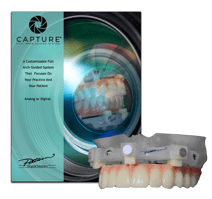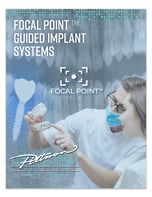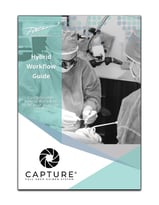When it comes to dental implant placement, dentists and oral surgeons have two primary approaches: guided and non-guided. Understanding the difference between these methods is crucial for professionals to effectively communicate with their patients and ensure a successful outcome. In recent years, guided implant placement has gained popularity due to its numerous advantages and improved patient experiences.
Guided implant placement involves the use of advanced digital technology, such as cone-beam computed tomography (CBCT) scans and 3D virtual planning software, to create a precise surgical guide. This guide acts as a roadmap during the implant placement procedure, ensuring accurate and predictable results. On the other hand, non-guided implant placement relies solely on the dentist's or surgeon's skill and expertise without the aid of such technology.
One of the primary benefits of guided implant placement is increased accuracy. The surgical guide allows for precise positioning of the implant, minimizing the risk of damage to surrounding structures, such as nerves or adjacent teeth. This precision ultimately leads to improved aesthetic outcomes and functional results. Additionally, guided implant placement reduces the need for invasive surgical techniques, making it a minimally invasive and more comfortable procedure for patients.
Moreover, guided implant placement enhances efficiency and saves valuable time. The virtual planning software enables dentists and oral surgeons to thoroughly assess the patient's anatomy and plan the implant placement in advance. This preoperative planning streamlines the surgical procedure, reducing chair time and minimizing the patient's discomfort. With a clear plan in place, the dentist can focus on executing the procedure accurately and efficiently.
Another significant advantage of guided implant placement is improved patient communication. By utilizing digital tools, dentists can visually present the treatment plan to their patients. This helps patients understand the procedure, visualize the final result, and actively participate in the decision-making process. Clear communication and patient involvement contribute to higher patient satisfaction and compliance.
At Pittman Dental Laboratory we utilize the latest in digital technology when designing our Capture® and Focal Point® Guides. Capture® is our all of X guide and Focal Point® is our one and two site implant guide. Each Doctor will be given an online review with our implant team to review the procedure. This review can also be shared with the patient. Pittman Dental Laboratory also offers chairside services to assist the Doctor on the day of the procedure. To learn more about our guided products and plans, download the following brochures and guides:
In conclusion, guided implant placement offers dentists and oral surgeons a more precise, efficient, and patient-centered approach to dental implant surgery. By utilizing advanced digital technology and creating a surgical guide, professionals can achieve accurate implant placement, minimize risks, and enhance overall treatment outcomes. As dental implant procedures continue to evolve, embracing guided implant placement is becoming the gold standard for achieving long-term success and patient satisfaction.




